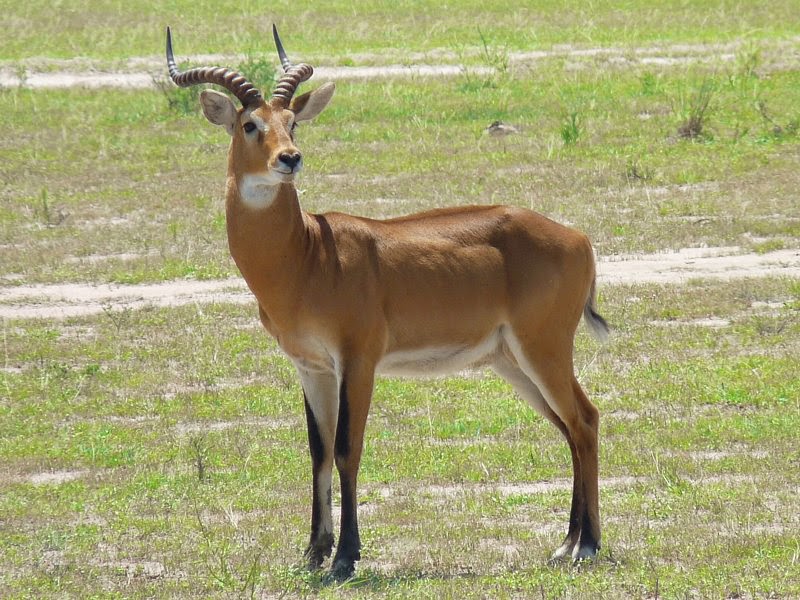This is to conclude an introduction to the wonders of Murchison Falls National Park in western Uganda, began here in my last posting. While we met some animals in the context of specific places last time, they were just a tiny sample of what the park offers. (As indeed are those introduced here, but hopefully this will give you a stronger taste.)
I'll start with one of the little and too-often overlooked animals.
 |
| Dragonfly, Family Libellulidae, by the Nile. (Thanks for the i.d. Susan - see Comments below.) |
From that extreme to the other, the park is rich in mammals, including very big ones!
Elephants aren't the only ones to enjoy the mud, presumably both for its cooling properties and as protection against biting insects - including Tsetse Flies.
Somewhat less nervousness-inducing but none the less impressive are Giraffes - could anyone ever tire of seeing these magnificently unlikely products of evolution?
Cattle and antelopes all belong to the same big family of grazers, and there are plenty of 'other' antelopes wherever you drive in Murchison. Indeed near to the river the open grasslands are grazed down to a short lawn. Perhaps the honour of first mention should go to a Ugandan national emblem.
 |
| Actually the lovely Uganda Kob Kobus kob thomasi isn't officially the national emblem - that honour belongs to a bird, which we'll meet soon - but it does appear on the national coat of arms. |
 |
| Oribi Ourebia ourebi are delicate-looking little antelope, widespread south of the Sahara. |
And after drawing attention to the garbage sorting activities of some Warthogs last time, I feel that I should acknowledge that most of the Muchison Falls warties do live wild and independent lives!
 |
| Warthog family Phacochoerus africanus on the move. |
Olive Baboons Papio anubis are another species which has recognised the benefits of human haunts, in terms of what we might leave for them to scrounge. They tend to be rather more proactive than the Warthogs however, and if you leave a car open at a picnic area, baboon retribution is likely to be dramatic!
 |
| Olive Baboon mother and baby watching events at the Paraa ferry crossing. |
 |
| Striped Ground Squirrel Xerus erythropus are bold and cheeky. |
Unlike mammalian predators which are most active at night, bird hunters are easier to see.
 |
| The Grey Kestrel Falco ardosiaceus is a much smaller hunter, but scarey enough if you're in its size range! |
Among the known prey of the goshawk are francolins, ground-dwelling relatives of chooks, partridges and pheasants.
 |
| Crested Francolins Dendroperdix sephaena |
The open areas support many other ground-dwelling birds too.
 |
| Black-headed Lapwings Vanellus tectus doing their best to avoid a decline in their species. |
 |
| Abyssinian (or Northern) Ground Hornbill Bucorvus abyssinicus. These very large (a metre high) birds stalk the grasslands in small groups, hunting small animals. |
And just to show that there are some small birds there that don't spend their time on the ground!
 |
| Northern Red Bishop Euplectes franciscanus, one of the weavers, constructing a delightful woven enclosed nest hung among grass stems. |
I can't imagine that you'd go to Uganda without visiting Murchison Falls, but this is just to make sure! It's a great reserve.
BACK TOMORROW FOR A BRIEF ACKNOWLEDGEMENT OF WATTLE DAY

























































